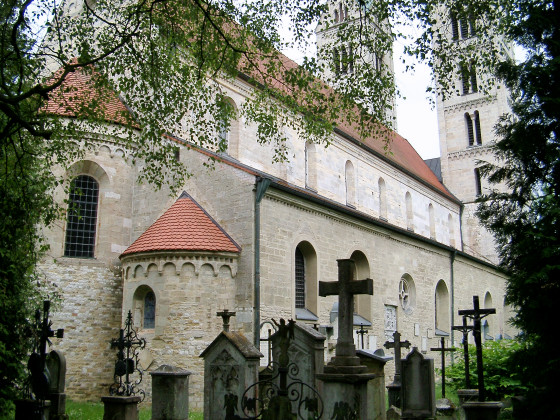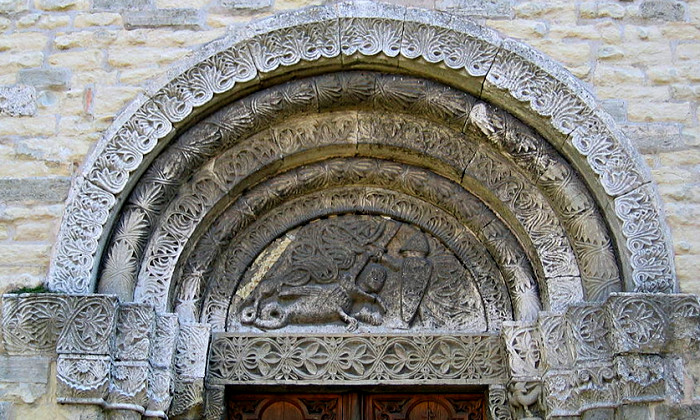Straubing
can look back on a long history, Celts and Romans already settled here. The Roman fort "Sorviodurum" bears witness to this. Finds are exhibited in the Gäubodenmuseum. Today the medieval town complex presents itself with magnificent patrician houses and Gothic contemporary witnesses.

City square with Trinity Column and City Tower
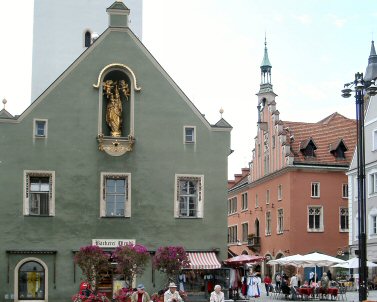
The city tower rises from the green house on the city square (which is called Theresienplatz here).
On a plaque it says: City tower built 1316 to about 1400th Madonna (1675).
The town hall is on the right side of the house with the (new) gothic gables.

This is how the beautifully dressed up city presents itself in its baroque splendour. The medieval houses were destroyed in the great fire of 1780. But there are still enough witnesses of the past, as Straubing was once the proud capital of the Wittelsbach duchy "Straubing-Holland" 1353 - 1425. see Wikipedia
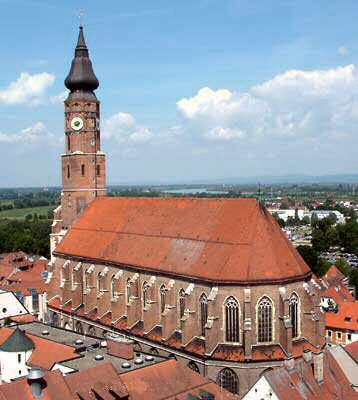
I was very impressed by the St. Jacob Basilica. Unfortunately, the gothic splendid building suffered badly during the city fire and therefore it has baroque elements today, such as the onion tower and classicistic elements. The interior of the church is worth seeing. The Gothic windows are largely preserved. One of them (Moses window) was designed by Albrecht Dürer. The altar was designed by Michael Wohlgemut in 1486. He was the teacher of Albrecht Dürer. After many baroque and classicistic alterations, it presents itself today in a gothic form with the original shrine and figures. In the side chapels you will find various works of art such as a painting by Hans Holbein.
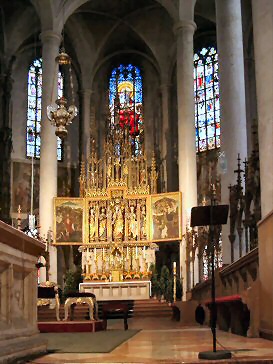
Neo-gothic altar with real gothic core
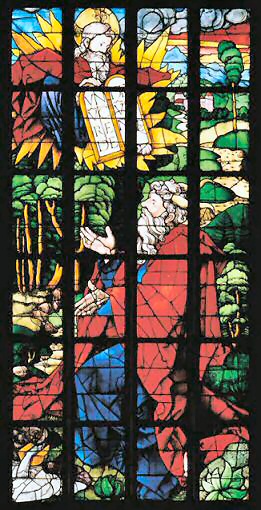
Moses Window

Madonna mit Kind v. Hans Holbein d. Ä.
In a side chapel on the left side I noticed this picture.
Holbein's Madonna was painted in 1502, and a certain similarity to the famous Mariahilf painting by Lukas Cranach (1537) cannot be denied.
Was Lukas Cranach inspired here?
The end of my stay in Straubing was a visit to the Romanesque
St. Peter's Church
Around 1180 the Augsburg Cathedral Chapter built a three-nave pillar basilica in the old settlement centre of Straubing, which stands on the remains of a Roman fort and Carolingian-Ottoman church buildings. St. Peter's has two valuable Romanesque tympanums, contains a Romanesque Christ (around 1200) and a moving Pietá (around 1340).
The walled cemetery with tombs from the 14th to the 19th century is one of the most important and beautiful cemetery complexes in the German-speaking world.

The more simple portal is only single stepped. In the tympanum relief a basilisk fights against a lion. The basilisk with its poisonous breath was considered a snake monster, the lion was the symbol of power.


The double-stepped west portal with columns is elaborately decorated with fine ornamentation. In the tympanum field there is a relief group depicting the fight of a knight against a man-eating dragon.
![]() For a larger view of the tympanum click on the picture above!
For a larger view of the tympanum click on the picture above!
In the area of the Peterskirche there is the famous Totentanzkapelle and the Agnes Bernauer Kapelle with its gravestone.
Famous names that belong to Straubing:

Agnes Bernauer
She was the mistress and perhaps the first wife of the Bavarian Duke Albrecht III. Because of this improper relationship Albrecht came into conflict with his father Ernst, who had Agnes Bernauer drowned as a witch in 1435 near Straubing in the Danube.
Every four years the Agnes Bernauer Festival takes place in Straubing, where the story is staged by amateur actors.

At Kaffee Krönner in Straubing there is an Agnes Bernauer Torte.

Joseph von Fraunhofer
(* 6 March 1787 in Straubing; † 7 June 1826 in Munich) was an optician and physicist.
He founded the scientific telescope construction at the
beginning of the 19th century. One type of lens, the Fraunhofer lens, was named after him.
Thanks to his innovative way of thinking, Joseph von Fraunhofer became the role model and namesake of today's Fraunhofer-Gesellschaft,
which in turn became famous for the MP3 format for digital music recording.


Danube cycle route
